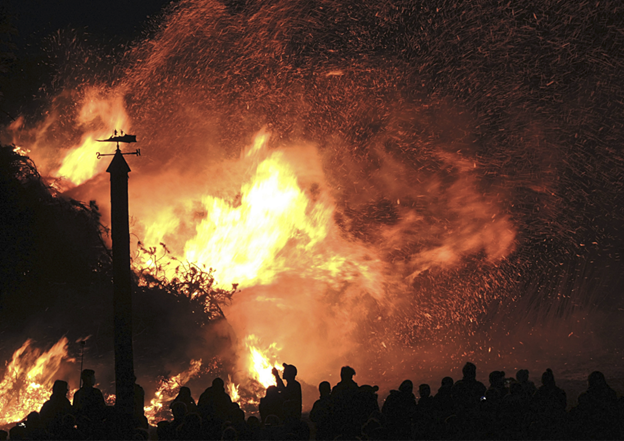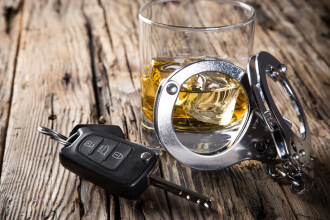Wildfires can lead to catastrophic destruction, leaving residents displaced and with extensive property damage. In recent years, massive wildfires like the Smokehouse Creek wildfires have ravaged communities nationwide. For victims, the painful process of assessing damages, rebuilding, and recovering losses begins immediately while dealing with displacement trauma for months.
Legally establishing accountability amidst crisis chaos feels overwhelming without guidance. However, certain parties, like government agencies and utilities, bear legal responsibility if their actions or negligence contributed to wildfire ignition or intensity. Understanding liability frameworks, evaluating evidence, negotiating adequately with insurance firms, and exploring litigation options greatly impact reconstruction abilities. This guide covers essentials around exercising legal rights as wildfire damage victims toward rehabilitation.
Determining Liability in Wildfire Cases
There are several potential causes of wildfires, including:
Unattended Campfires
Recreational visitors’ failure to extinguish temporary cooking/warmth campfires adequately increases the likelihood of accidental escape into dry shrubbery, especially during high winds.
Discarded Cigarettes
Tossing out lit cigarette butts carelessly along roadsides surrounded by dead leaves or dried-up vegetation risks sparking blazes.
Sparking Powerlines
Poor maintenance and encroachment around power transmission infrastructure cause live wires to sag and short-circuit, which ignites nearby fields.
Deliberate Arson
Some deliberately malicious wildfires get sparked through incendiary means or homemade devices. Serial arson should be investigated separately by authorities.
Unsafe Land Management Practices
Inadequate brush clearing around communities, failure to remove dead trees/leaves, and the buildup of dry vegetation due to policy restrictions make some forests prone to uncontrollable fires, especially during prolonged droughts.
Depending on the specific cause of the wildfire, different parties may be held liable for the damages:
Government Agencies
Local administration units like forest departments, municipal controllers, and public works departments are held responsible for insufficient land and vegetation management, delays in initial fire response, faulty evacuation planning, or scarcity of fire safety resources.
Utility Companies
Energy infrastructure firms bear accountability for sparking blazes through faulty powerline equipment maintenance, aging transformers with known issues, or delayed inspection of malfunctions despite previous red flags and citizen complaints.
Negligent Individuals
Campers, drivers, or companies failing to handle cigarette waste responsibly, Truckers ignoring malfunctioning exhaust systems, and unauthorized fireworks near scrublands make such parties liable for resultant wildfires through carelessness.
Property Owners
Sometimes, large estate owners who do not adequately address overgrown vegetation or dead trees on their lands after notices contribute to neighboring community fires through negligence.
Establishing a definitive direct or contributory cause requires extensive investigation and reconstruction of events before accusing specific entities of being legally culpable. Experienced wildfire attorneys assist victims in undertaking these efforts methodically while they initially focus on urgent recovery necessities.
Types of Recoverable Damages After a Wildfire
Below are lists of common damage types victims can potentially claim compensation for:
Property and Land Damage
Wildfires inflict tremendous structural destruction on residential or commercial buildings, which needs extensive repairs or full rebuilding in the worst cases. The land itself gets scarred through scorched earth and erosion.
Damaged or Destroyed Personal Belongings
The intense fires also damaged or demolished precious personal items like furniture, clothing, memorabilia, and electronics, forcing painful replacement.
Loss of Property Use
Being displaced or denied access to one’s own home or business facility due to external calamitous events causes major lifestyle and livelihood disruptions. Victims can pursue damages covering such forced privations.
Fire Debris Removal and Containment
The formidable task of safely cleaning up and carting away toxic ash and rubble from large burned-down properties also falls upon victims before efforts even start rebuilding.
Diminished Property Value
Char marks, landscape destruction from raging fires, or simply traumatic associations lower perceived desirability and, hence, the resale values of affected properties, diminishing owner net worth.
Emotional Distress
The harrowing experiences faced during evacuations, witnessing damages unfold, and post-fire uncertainties regarding stability cause immense mental anguish.
Medical and Recovery Expenses
Fires also cause physical injuries requiring hospitalization in some cases or even just healthcare consultations post-trauma. Displaced folks also rack up temporary accommodation, clothing, and supplies costs.
Specific damages are eligible for claiming, and compensation amounts accountable parties’ payout are determined by criteria like the extent and types of verifiable losses, shared negligence rulings if any, and case merits. Experienced attorneys help navigate the nitty-gritty optimally.
The Importance of Evidence Gathering
While logical liability seems apparent occasionally, proving accountability beyond doubt before courts to secure damage payments involves producing irrefutable documentation and testimonials covering:
Photographic and Video Evidence
Capturing images and footage demonstrating property, environmental, and personal item damages from multiple incidents forms a visual damage assessment chronicle. Before-after comparisons establish the extent sharply.
Receipts and Invoices
Comprehensively compiling invoices for destroyed properties and belongings supplemented by receipts from replacement purchases and reimbursement claims filed to insurers establishes financial losses.
Eyewitness Statements
First-hand witness reports by neighbors and emergency responders corroborating the damage unfolding, the intensity of the blaze, and the origin trajectory help certify impact. Statement givers should legally certify accounts.
Government and Fire Department Incident Reports
Official documentation by local authorities provides evidentiary support regarding fire timelines, scale of spread, containment details, and, if established, causes of ignition, apart from accountability oversights, if any.
Insurance Policy Documents
Insurance settlements are often unfairly capped or denied due to a lack of comprehension. Having legal experts review policies thoroughly enables sufficiently translating legitimate claim values during intense legal negotiations.
Methodical collation of tangible documentation strengthens the legitimacy of compensation sought from liable parties. Experienced attorneys also know tactics preventing defendant parties from dismissing or underpaying rightful dues.
The Role of Wildfire Damage Attorneys
Specialist wildfire damage attorneys assist victims in several ways:
Conducting Incident Investigations
They piece together clinical reconstructions of how fires originated and spread based on weather patterns, area foliage, eyewitness inputs, and public agency oversights. This reveals accountability avenues for just recovery.
Assessing Damage and Losses
Legal teams audit documented losses against policies, expectations, market rates, and precedence to derive fair claim value estimates for seeking sufficient compensatory settlements.
Negotiating Optimal Insurance Settlements
Leading attorneys with litigation exposure adeptly negotiate with insurers leveraging evidence linked to culpability. Maximizing valid payout amounts despite standard denial tricks prevents deep losses.
Litigation to Establish Culpability
Where settlement amounts get unfairly limited, and defendant parties attempt dismissal, seasoned lawyers relentlessly pursue court battles to extract maximum accountable damages beneficial for proper rehabilitation.
The Smokehouse Creek wildfires inflicted tremendous losses, with residents alleging that authorities failed to mitigate risk and provide rapid response. Pursue experienced wildfire damage representation from qualified local legal experts for optimal restitution and rebuilding support.
Conclusion
Navigating the devastating aftermath of calamitous wildfires tests victims endlessly through displacement, property loss, and trauma while expecting urgent rehabilitation. Establishing legal culpability and maximizing recovery through meticulous documentation, negotiation dexterity, and unrelenting court petitioning by experts are crucial for rebuilding futures amid the ashes. Justice delivers the most enduring consolation.














